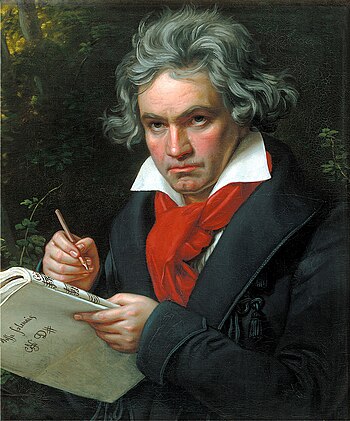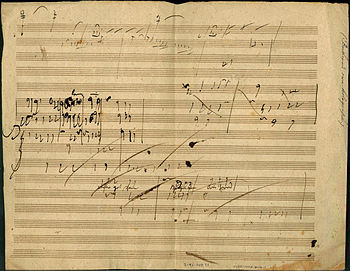Write on, Beethoven
The music and the myth of Ludwig van Beethoven have enjoyed unending popularity over the past two centuries. Recently, he became the subject of a massive new biography, and a separate examination of his use of paper give modern admirers fresh insight into the mind of a tortured genius.

Portrait Ludwig van Beethoven when composing the Missa Solemnis (Photo credit: Wikipedia)
A prolific writer, Beethoven composed nine symphonies, thirty-two piano sonatas, sixteen string quartets, and five piano concertos. Even while clinically deaf, he wrote some of his most profound musical scores. Beethoven's reliance on sheaves of manuscript paper to compose, to communicate and to create is explored in Nicholas Basbanes' most recent book, On Paper. Beethoven wrote and re-worked his music until what he saw on paper reflected the sounds in his head. Paper, like a piano, was essential to the composer, and through surviving sheet music historians are able to follow Beethoven's creative process. Even a cursory look at any leaf of Beethoven's handwritten music reveals ink smudges, swooping notes dashed madly across the page and holes in the paper where corrections were made, undone, then corrected again. Everything had to be set down on paper, because, as readers learn in the book, that Beethoven was, as professor Robert Winter says in On Paper, "creating sounds that did not previously exist."
Unlike Mozart, whose arrangements sprang almost fully formed from his hand to the page, Beethoven suffered over each and every note. Examples from both composers affirm two different men at work; one whose results are flawless from the outset, the other a tormented soul filled with divine music.
Jan Swafford's new biography, Anguish and Triumph, aims to extricate the man from the cult of personality that surrounded Beethoven even during his own lifetime. Swafford, also a composer in addition to biographer, spent a decade meticulously researching a man known to be quarrelsome, thunderous, and totally incapable of cultivating personal or professional relationships. In this 1,104-page book, published by Houghton Mifflin, Swafford surveys the era and the ideas that informed Beethoven's work, as well as offers critical insight into the composer's music. Both books peel away the composer's legend, and reveal the man within.

Piano Sonata in A Major, op. 101, Allegro: manuscript sketch in Beethoven's handwriting. (Photo credit: Wikipedia)















